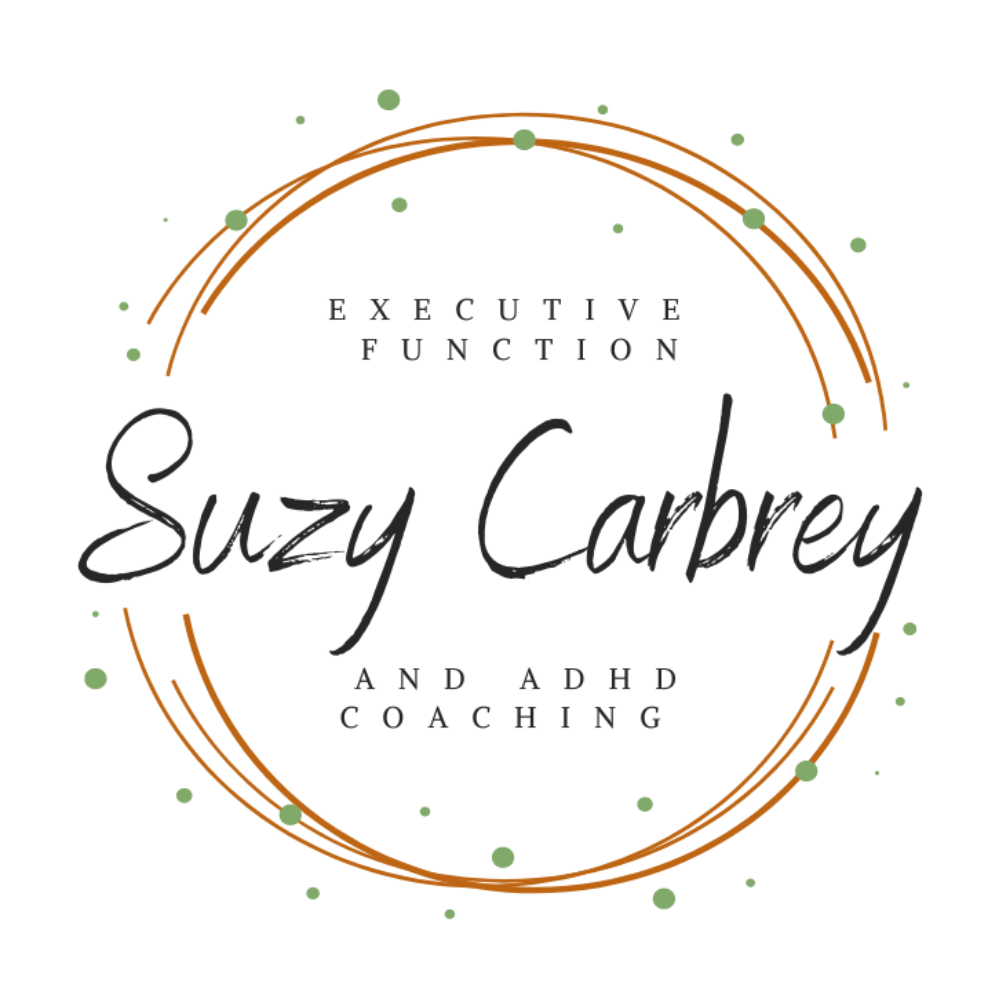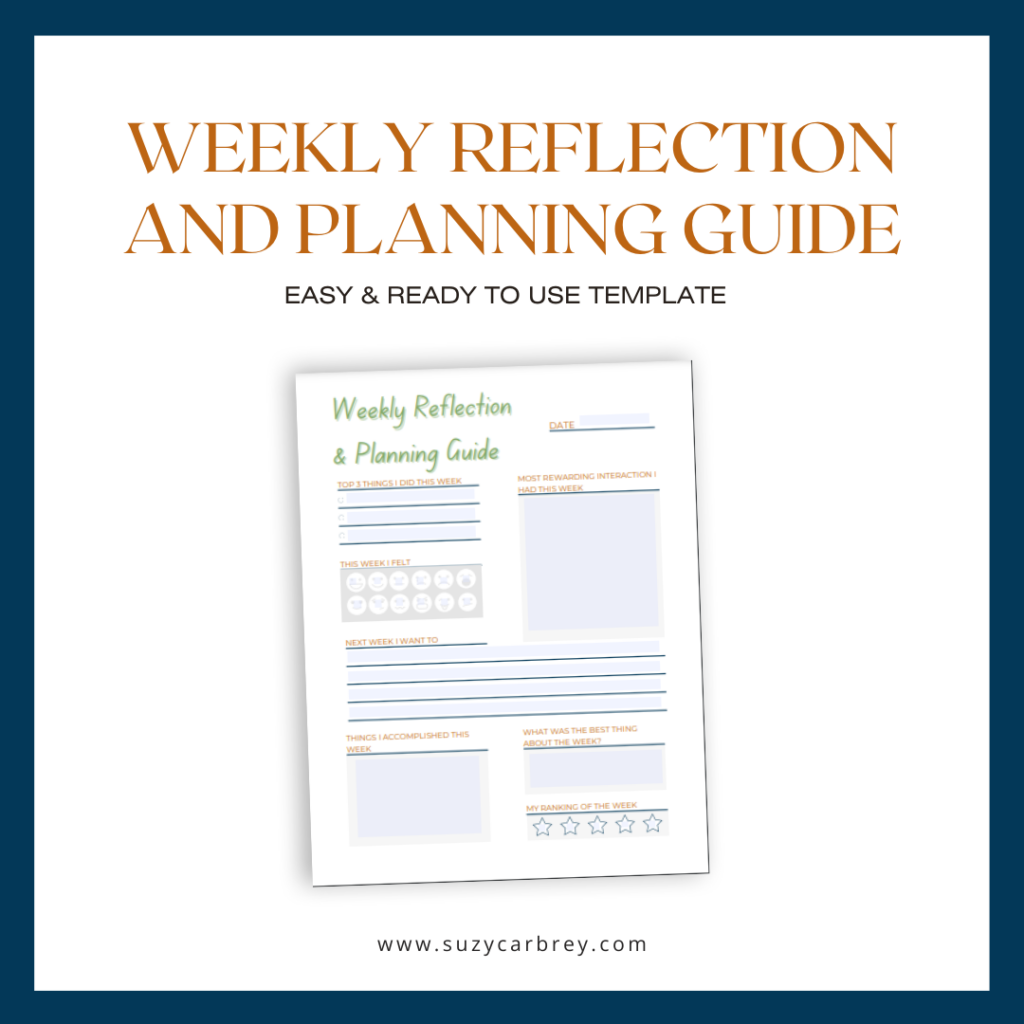Most of us are walking around carrying far more than we were designed to hold. Deadlines, appointments, errands, chores, decisions, expectations, the buzzing in the back of our minds that never seems to stop. And if you live with ADHD or executive functioning challenges, you might feel like your mental load is even heavier because you’re not only trying to keep up with the tasks themselves, but also the systems that keep them organized.
Here’s the truth: you don’t have to carry it all.
There’s an art to letting go, intentionally deciding what doesn’t deserve your energy. This isn’t about giving up or being careless. It’s about recognizing that your time, attention, and emotional bandwidth are limited resources. And you get to choose where they go.
Why Letting Go Matters for Your Brain
Our brains are built to conserve energy. Every decision, every “should I or shouldn’t I?” moment, uses up a slice of your mental fuel. Executive functions, skills like planning, prioritizing, emotional regulation, and working memory, are like the control tower of the brain. When you use them up on low-priority or unnecessary worries, you have less capacity for what’s truly important.
Letting go is a way to give your executive functioning system breathing room. When you stop sweating the small stuff, you create space to think clearly, follow through on the things that matter, and experience less stress along the way.
The Myth of Caring About Everything
We’ve been taught that being “responsible” means caring about everything equally. That a “good” professional, parent, or partner keeps all the plates spinning at once. But here’s the reality: some plates are made of glass, and some are made of paper. If a glass plate falls, like your health, your relationships, or your financial well-being, it shatters. But if a paper plate falls, like mismatched socks or unanswered emails, it might crumple, but nothing critical breaks.
Letting go doesn’t mean you’re lazy. It means you’re discerning. It means you recognize the difference between glass and paper.
Step One: Notice Where Your Energy Leaks
Before you can let go, you need to identify what’s draining you unnecessarily. A few common leaks:

- Decision fatigue: agonizing over small choices like what to wear, what to eat, or which email greeting sounds most professional.
- Perfectionism: rewriting a text three times before sending it, or obsessing over formatting that no one else will notice.
- Unrealistic expectations: believing you must fold laundry immediately, keep a spotless kitchen, or attend every social event.
- Unnecessary battles: arguing over the “right” way to load the dishwasher, or stressing when someone else doesn’t do things your way.
- Obligation over alignment: saying yes to commitments that don’t align with your goals or values.
Each of these leaks pulls energy away from things that matter most.
Step Two: Create a Mental “Doesn’t Deserve My Energy” List
A powerful way to practice letting go is to literally make a list. Write down everything that doesn’t deserve your attention anymore. This list will look different for everyone, but here are some examples:
Emails you don’t need to reply to.
Not every “thank you” needs a “you’re welcome.” Not every group announcement needs acknowledgment.
Household “rules” that don’t really matter.
Towels folded a certain way, dishes stacked perfectly, beds made daily. If it’s not adding to your life, let it slide.
Other people’s opinions.
You can’t control what others think of your parenting, your career choices, or your messy garage. Their judgment doesn’t pay your bills or fuel your joy.
Guilt about rest.
Rest isn’t wasted time. Rest is recovery. The guilt is optional.
Trendy productivity hacks.
If color-coded calendars or 5 a.m. routines don’t work for your brain, you don’t have to force them.
Step Three: Use the “Worth It?” Test
When you feel yourself spiraling into worry or over-focus, pause and ask:
- Does this truly matter to me or my values?
- Will this still matter tomorrow, next week, or next year?
- What am I giving up by spending energy here?
- If I let this go, what space does that free up?
If the answer is “not much,” or if holding onto it costs more than it gives, that’s your cue to release it.
Practical Examples of What You Can Let Go Of
Let’s get specific. Here are some everyday scenarios where letting go can free up enormous amounts of energy.
1. Wardrobe Worries
Stop spending 15 minutes deciding what to wear.
Let go of variety. Embrace a small rotation of “go-to outfits” that you know you like and feel comfortable in. No one notices as much as you think.
2. Meal Perfection
Dinner doesn’t have to be gourmet or Instagram-worthy.
Let go of the pressure to cook elaborate meals. Keep “easy wins” like frozen veggies, rotisserie chicken, or pre-made soups on hand. Nourishment matters more than presentation.

3. The Perfect Reply
Not every message requires a novel-length response.
Let go of the belief that your emails or texts must be perfectly worded. A simple “Thanks!” or “Got it” is often enough.
4. Chores That Don’t Move the Needle
Do you really need to dust the ceiling fan weekly?
Let go of over-maintenance. Focus on tasks that keep your space safe, sanitary, and functional. Everything else is optional.
5. Social Comparison
Scrolling Instagram and feeling behind?
Let go of comparison as a measuring stick. Unfollow accounts that trigger shame. Curate your feed to inspire, not deplete.
6. Unfinished Projects
That half-done craft, the book you feel guilty for not finishing, the course you signed up for and abandoned.
Let go of sunk costs. If it’s not serving you anymore, it’s okay to release it without finishing.
7. Constant Availability
Being reachable 24/7 is exhausting.
Let go of the pressure to respond instantly. You are allowed to set boundaries around communication.
The Emotional Side of Letting Go
Letting go isn’t always easy. Sometimes, we cling to things because they give us a sense of control, or because we fear judgment. Sometimes, we hold onto guilt, believing we “should” care. Recognize that guilt is not proof that something matters. Guilt is often a conditioned response.
When you feel guilt creeping in, try this reframe:
“I’m not neglecting. I’m choosing.”
Choosing means you are intentionally directing your energy where it counts, instead of scattering it everywhere.
Building a Practice of Letting Go
Letting go is a skill you can strengthen over time. Here are some ways to practice:
- Weekly Energy Audit
At the end of each week, ask: What drained me? What fueled me? Circle one drain that you’ll release next week. - Set a “Good Enough” Standard
Instead of “perfect,” aim for “done.” Folding laundry into the drawer is enough. A dinner that fills the belly is enough. A two-line reply is enough. - Outsource or Automate
Use delivery services, bill auto-pay, or hire help for tasks you dread. This isn’t indulgence; it’s energy management. - Practice Saying No
Decline commitments that don’t align with your values. “Thanks for thinking of me, but I can’t take that on right now” is a complete sentence. - Mindfulness Check-Ins
When you notice yourself obsessing, pause. Take a breath. Ask: Is this worth my energy right now?
Why This Matters for Neurodivergent Brains
For ADHD and other executive functioning challenges, the mental load of daily life is already higher. Working memory leaks, time blindness, and difficulty prioritizing can make everything feel urgent. Practicing letting go is like decluttering your brain. It gives you clearer signals about what really needs your attention and reduces the overwhelm that keeps you stuck.
When Letting Go Feels Scary
Sometimes we fear that if we let go, something important will slip. If that’s you, experiment with temporarily letting go. Try dropping one low-stakes task for a week and see what happens. For example:
- Don’t fold laundry, just sort it into bins by type or person.
- Don’t check email after 6 p.m.
- Don’t clean the car until next weekend.
Chances are, nothing catastrophic will happen. You’ll build trust in your ability to let go.
Closing Reflection: What Doesn’t Deserve Your Energy?
Letting go is less about doing nothing and more about doing less of what doesn’t matter, so you have more for what does. Imagine how much mental space you’d reclaim if you released even 10% of your current load.

Here are some reflection prompts to get you started:
- What’s one task I’ve been holding onto that no one would notice if I stopped?
- What expectation do I carry that doesn’t align with my values?
- Where am I over-investing energy for minimal return?
- What guilt can I release by choosing what matters most?
The art of letting go isn’t about lowering your standards. It’s about raising your awareness of what deserves your energy and what doesn’t.
Final Thought
You have only so much bandwidth. Every “yes” is also a “no.” By letting go of what doesn’t matter, you create room for the life you actually want. The energy you save becomes fuel for joy, connection, creativity, and growth.
So the next time you feel pulled in every direction, pause and ask yourself: Does this truly deserve my energy?
If the answer is no, give yourself permission to let it go.
Learn more with Online Coaching for Executive Functioning / ADHD
Ready to gain control and enhance your executive functioning? As an experienced and compassionate coach, I specialize in providing support for executive functioning and ADHD. To embark on your journey, please reach out to me at 708-264-2899 or email hello@suzycarbrey.com to schedule a FREE 20-minute discovery call consultation.
With a background as a speech-language pathologist, I have a strong foundation in executive functioning coaching. My graduate degree program in SLP placed a significant emphasis on cognition, including executive functions, and I have years of experience in medical rehabilitation, providing cognitive-communication therapy. Additionally, I have completed an ADHD Services Provider certification program, I am Solutions-Focused Brief Therapy Diamond Level 1 certified and I am trained in the Seeing My Time® executive functioning curriculum.
Experience the convenience and effectiveness of online coaching, backed by studies that demonstrate equal results to in-person services. Parents, professionals, and emerging adults love the convenience and privacy of receiving coaching from their own homes.
Whether you reside in Chicago, Milwaukee, Indianapolis, Kansas City, or anywhere else around the globe, I am here to assist you. Schedule your discovery call consultation today, and I eagerly anticipate the opportunity to work with you!
Please note that although I am a certified speech-language pathologist, all services Suzy Carbrey LLC provides are strictly coaching and do not involve clinical evaluation or treatment services. If you require a formal speech therapy evaluation and treatment, please inform me, and I can provide appropriate recommendations.



Thank you
Your blog is a testament to your dedication to your craft. Your commitment to excellence is evident in every aspect of your writing. Thank you for being such a positive influence in the online community.
Thank you!
Your blog is a testament to your passion for your subject matter. Your enthusiasm is infectious, and it’s clear that you put your heart and soul into every post. Keep up the fantastic work!
Every time I visit your website, I’m greeted with thought-provoking content and impeccable writing. You truly have a gift for articulating complex ideas in a clear and engaging manner.